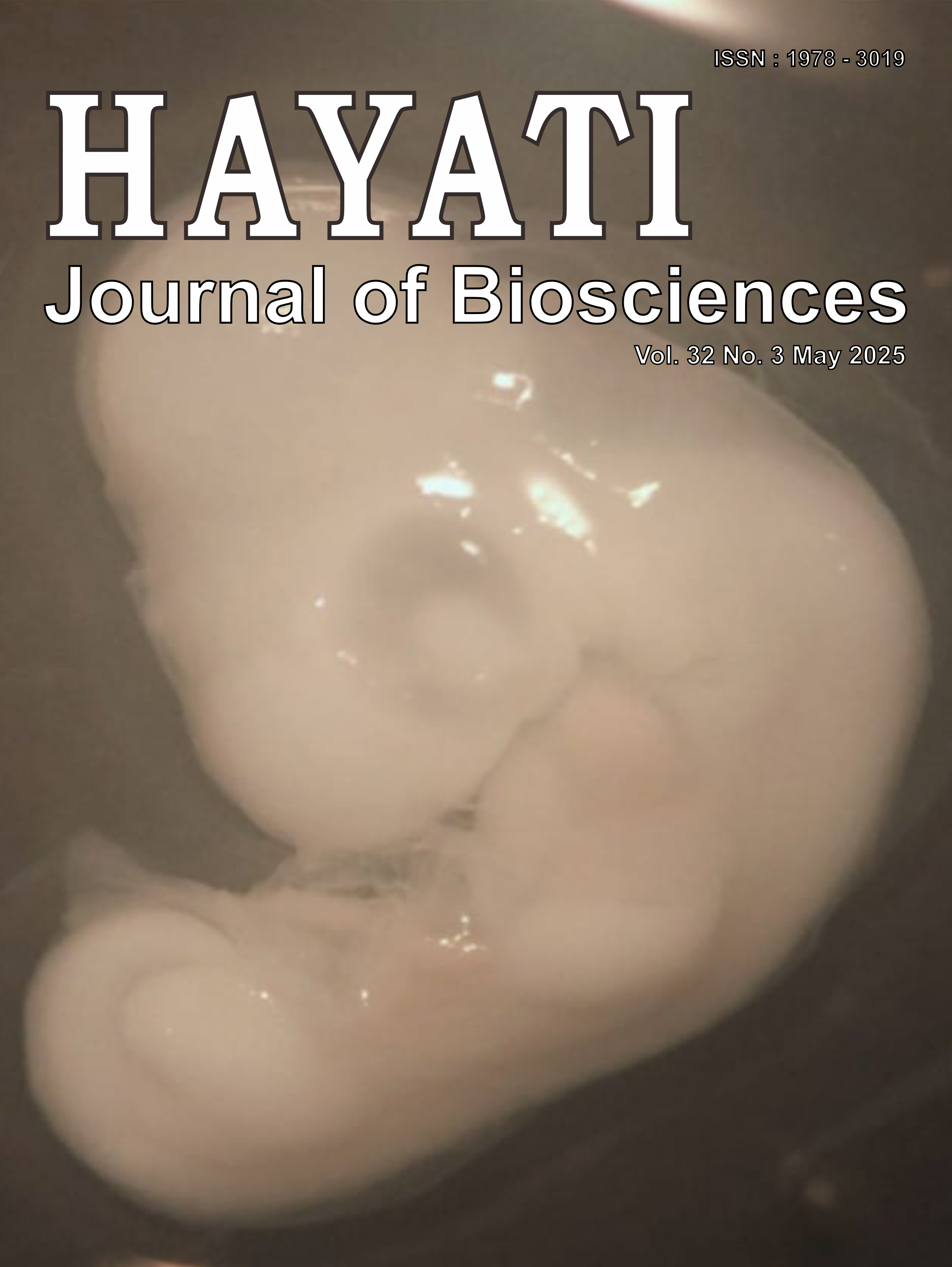Congenital Malformations in Chicken Embryos After Oxybenzone Exposure
Abstract
Topical use of oxybenzone, commonly found in sunscreens, can be absorbed by the skin, and long-term use may cause endocrine disruption, cancer, and teratogenic effects. However, its potential teratogenic effects on embryonic development have not been well-studied. This study aims to determine the impact of oxybenzone exposure on the early stage of embryonic development. Chicken embryos aged 72 hours (20 Hamburger-Hamilton/HH stage) were exposed to a pure oxybenzone for 24 hours at varying concentrations (0, 1, 5, 10, and 20 ppm), each group consisting of 3 embryos. Embryo preparations were made using the wholemount method. Morphological abnormalities were observed with a stereo microscope, and descriptively morphometric measurements were analyzed using ImageJ software. Statistical analysis used One-way ANOVA and Tukey’s test for normally distributed data, while Kruskal-Wallis H and Mann-Whitney U test for non-normally distributed data. This study found that oxybenzone significantly enlarged the embryo, telencephalon, and eye. Several abnormalities were observed in the embryos exposed to oxybenzone, including incomplete closure of the anterior neuropore, concavity in the anterior and lateral of the mesencephalon, and depressions in the tail bud. This study concludes that oxybenzone acts as a teratogen, causing abnormalities in embryonic development, particularly in the central nervous system.
Downloads
Copyright (c) 2025 Hendry T.S. Saragih, Desi Eka Putri Empra, Desti Rahmadian, Fianicha Shalihah, Alfian Primahesa, Shintia Oktaviana, Hayu Swari Allimi, Nur Indah Septriani, Ardaning Nuriliani

This work is licensed under a Creative Commons Attribution-NonCommercial 4.0 International License.
HAYATI J Biosci is an open access journal and the article's license is CC-BY-NC. This license lets others distribute, remix, tweak, and build upon author's work, as long as they credit the original creation. Authors retain copyright and grant the journal/publisher non exclusive publishing rights with the work simultaneously licensed under a https://creativecommons.org/

























.png) IPB University
IPB University Department of Biology
Department of Biology The Indonesian Biological Society
The Indonesian Biological Society 

